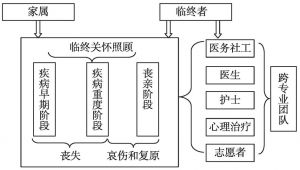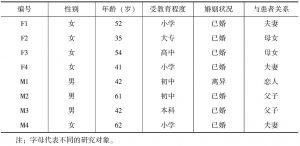论文
生命意义的重建:癌症晚期病人家属丧失、哀伤和双向摇摆的复原历程研究
摘要
在肿瘤社会工作的理论背景下,本文关注癌症晚期病人家属的问题。对八位癌症临终病人家属进行深度访谈后发现,这些个体经历了家人从生到死的整个生命历程,他们的个体身份从照顾者、丧亲者转变成复原者。本文探讨了重要的人生转折期,他们如何面对癌症晚期患者的死亡,如何度过哀伤,如何在失去的关系中自我复原;围绕癌症死亡的议题,展现了在人文医学的框架下,个体如何回归正常的生活轨道,建立正常的日常生活,如何开展个人关系的重建和寻找新的生命意义。本研究发现,“整合框架”下的哀伤理论,能更好地解读丧亲者的哀伤经验。哀伤叙事体现了丧亲者与生命意义重建进行抗争的声音,哀伤不等同于无意义,丧亲者会在整个哀伤历程中重新定位,在摇摆的复原历程中为自我生命建构新的意义。
作者
参考文献 查看全部 ↓
检索正文关键字
论文目录
- 一 研究缘起
- 二 整合框架:丧失、哀伤和双向摇摆的复原
- 三 研究方法与访谈样本
-
四 丧失和哀伤:癌症晚期病人家属的丧亲旅程
- (一)宣判癌症晚期:被贴上“死亡”标签
- (二)癌症病人病情告知:“说”还是“不说”
- (三)临近死亡:亲人离去意味着永远地失去
- (四)亲人死亡:否认却不得不接受失去的事实
- (五)复杂的哀伤:不同关系的死亡
- 1.配偶死亡
- 2.成年子女死亡
- 3.父母死亡
-
五 丧亲者双向摇摆的复原过程
- (一)生理和心理重创
- (二)排斥回归正常的生活轨道
- (三)建立正常的日常生活
- (四)寻找新的社会支持
- (五)生命意义的重构
-
六 研究发现、讨论和局限
- (一)研究发现
- (二)讨论
- (三)研究局限
查看更多>>>



